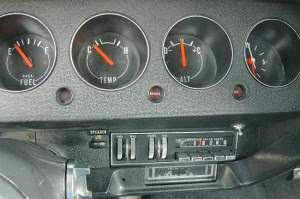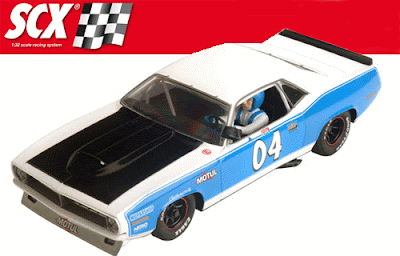 |
| 1967 Plymouth Barracuda |
The Barracuda finally became a true pony car in 1967. The Barracuda was redesigned in a wheelbase, newest and offered a choice of V8s, two V8s and a new 273 cid V8 383 cid. The Slant Six engine was officially dropped. Unfortunately, the engine 383 was so great that the power steering pump could not fit under the hood, so it was not available - resulting in poor handling. The original fastback model now joined by a notchback and a convertible model. The Formula S option package was still available and added a heavy suspension, tachometer, Wide-Oval tires, special trim and emblems.
 |
| 1968 Plymouth Barracuda |
The Barracuda received minor styling changes and greater availability of engines for 1968, with the reintroduction of the 225 Slant Six engine. The top of the line 383 also received a power boost. The 273 cid engines were retired. To give the Barracuda over a performance image, Plymouth quietly built a small number of Hemi powered Barracudas to give to professional drag racers, but these were so rare that they do not help the image of crabs is the Barracuda.
 |
| 1969 Plymouth Barracuda |
1969 was the year that Plymouth finally got serious about performance. They boosted the output of the 383 cc engine to 330 bhp and found room to fit power steering. Plymouth also introduced a cosmetic package built around the Formula S option, which they called Cuda. "The Cuda" could be had with a 275 bhp V8 of 340 or 383, but still not fast enough. Plymouth responded by filling in the triple carb 440 V8 under the hood, the biggest engine available in a pony car. Unfortunately, the larger engine required the elimination of steering again and was only available with an automatic transmission, rear axle as needed to be cushioned against the immense torque of 440. With 57% of car weight on top of the front wheels and the use of drum brakes all, suffered handling and braking.
 |
| 1970 Plymouth Barracuda |
Plymouth finally got the right angle performance for 1970, and were at full strength for him. The Barracuda was moved to the E-body platform, which it shared with the new Dodge Challenger. The Barracuda rode a wheelbase two inches shorter than the similar Dodge Challenger, despite its overall body dimensions were the same. The performance models were called 'Cudas and featured five different V8s, the 340, 383, 440, 440 +6, and the almighty 426 Hemi. The 440 and the Hemi cars received a special performance suspension to put high all that power to the road.
Barracudas came with a standard flat hood, while 'Cudas came with standard dual non-functional hood scoops. Cudas Optional in all "(and standard on Hemi) was very functional shaker scoop, so named because it linked directly to the engine, and poked up through a hole in the hood and, thus, "shake" whenever the engine did.
The Hemi cost $ 871 and was installed on just 652 hardtops (out of 17,242) and 14 convertibles (550) copies. It sported hydraulic lifters and it was easier to tune than in previous years. The 440 was a bargin at only 6 $ 250 and can track the Hemi up to 70 mph. Both engines were difficult to drive: the 440 six vacuum actuated front and rear carbs came with little warning, while the link Hemi throttle hard, sometimes snapped all eight barrels open at once.






































